How to Add a New Workout to Apple Watch
Workout types on Apple Watch
Learn about the workouts that you can use to track your exercise with the Workout app on your Apple Watch.
-
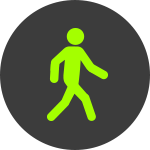
Walk
-
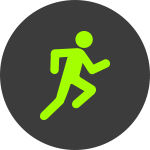
Run
-
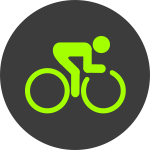
Cycling
-
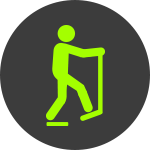
Elliptical
-
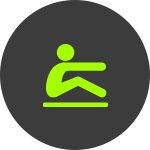
Rower
-
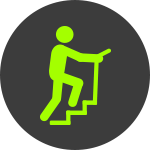
Stair Stepper
-
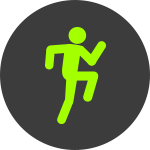
HIIT
-
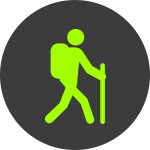
Hiking
-
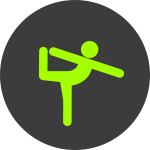
Yoga
-
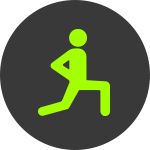
Functional Strenth Training
-
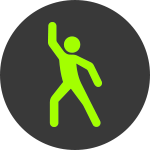
Dance
-

Cooldown
-

Core Training
-
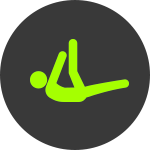
Pilates
-

Tai Chi
-
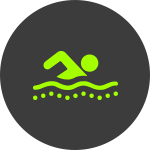
Swimming
-
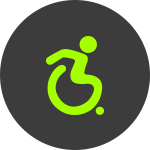
Wheelchair
-

Other
-

Walking
Choose Indoor Walk for walking on a treadmill or for when you're walking indoors, like on an indoor track or in a mall. To improve the accuracy of pace and distance for Indoor Walk, first accumulate at least 20 minutes of outdoor walking using the Workout app to calibrate your watch. For Apple Watch Series 1 or earlier, you need to bring your iPhone along for calibration.
Choose Outdoor Walk for activities like walking on a track or in the park. Depending on your Apple Watch, you might need to bring your iPhone with you to track certain metrics:
- Pace and distance: Apple Watch Series 2 or later has built-in GPS to track these metrics and provide a map of your walk in the workout summary on your iPhone. When your iPhone is with you, your watch uses the GPS from your iPhone to preserve battery. For the most accurate GPS hold your iPhone in your hand, or wear it on an armband or waistband. For Apple Watch Series 1 or earlier, bring your iPhone along for GPS. If you want to leave your iPhone behind with Apple Watch Series 1 or earlier, you can still track pace and distance for your workout using the watch's built-in accelerometer. To improve the accuracy of these metrics, first bring your iPhone along and accumulate at least 20 minutes of outdoor walking using the Workout app to calibrate your watch.
- Elevation: Apple Watch Series 3 or later has a built-in altimeter to track this metric. For Apple Watch Series 2 or earlier, bring your iPhone along to track your elevation.
Learn how to calibrate your Apple Watch.

Running
Choose Indoor Run for running on a treadmill or any time that you're running indoors. To improve the accuracy of pace and distance for Indoor Run, first accumulate at least 20 minutes of outdoor running using the Workout app to calibrate your watch. For Apple Watch Series 1 or earlier, you need to bring your iPhone along for calibration.
Choose Outdoor Run for activities like running on a track, trail, or road. Depending on your Apple Watch, you might need to bring your iPhone with you to track certain metrics:
- Pace and distance: Apple Watch Series 2 or later has built-in GPS to track these metrics and provide a map of your outdoor run in the workout summary on your iPhone. When your iPhone is with you, your watch uses the GPS from your iPhone to preserve battery. For the most accurate GPS hold your iPhone in your hand, or wear it on an armband or waistband. For Apple Watch Series 1 or earlier, bring your iPhone along for GPS. If you want to leave your iPhone behind with Apple Watch Series 1 or earlier, you can still track pace and distance for your workout using the watch's built-in accelerometer. To improve the accuracy of these metrics, first bring your iPhone along and accumulate at least 20 minutes of outdoor running using the Workout app to calibrate your watch.
- Elevation: Apple Watch Series 3 or later has a built-in altimeter to track this metric. For Apple Watch Series 2 or earlier, bring your iPhone along to track your elevation.
With Apple Watch, you can choose how to prepare for a long-distance run, like a marathon. Check out your options below:
- Power Saving Mode disables the Always On display, the heart rate sensor and cellular data during walking and running workouts. When the heart rate sensor is off, calorie burn calculations might not be as accurate. For longer workouts, you can choose to use a Bluetooth chest strap instead of the built-in heart rate sensor. Here's how to turn on Power Saving Mode, and here's how to connect Bluetooth accessories to your Apple Watch.
- You can sync music and podcasts directly to your Apple Watch ahead of time, so you can enjoy your content even when you're out of range of your iPhone. Learn how to sync content to your Apple Watch.
- Bring your iPhone with you. If you bring your iPhone with you, your watch can use Bluetooth for battery-intensive functions like connectivity, streaming music or podcasts, accessing Siri, and more.
- If your long-distance run is later in the day, you can preserve battery life by turning off cellular and the Always On display in the hours before your run. Here's how to turn cellular on or off and how to manage Always On settings.
- Learn more about battery performance.

Cycling
Choose Indoor Cycle for activities like taking a spin class or riding a stationary bike. Choose Outdoor Cycle for riding a bicycle outside.
Depending on your Apple Watch, you might need to bring your iPhone with you to track certain metrics:
- Speed and distance: Apple Watch Series 2 or later has built-in GPS to track these metrics and provide a map of your outdoor cycle in the workout summary on your iPhone. For Apple Watch Series 1 or earlier, bring your iPhone along to track your speed and distance.
- Elevation: Apple Watch Series 3 or later has a built-in altimeter to track this metric. For Apple Watch Series 2 or earlier, bring your iPhone along to track your elevation.

Elliptical
Choose Elliptical when you use an elliptical machine or do a similar activity.

Rower
Choose Rower when you use a rowing machine or do a similar activity.

Stair stepper
Choose Stair Stepper when you use a stair stepper machine.

High intensity interval training (HIIT)
Choose HIIT for cycles of intense exercise, followed by shorter periods of rest or recovery. For example, you might jump rope for 45 seconds, rest for 30 seconds, then repeat.
Some of the irregular movements in HIIT workouts might prevent a heart rate measurement. If heart rate isn't available, calories are still tracked using the built-in accelerometer. If you're not able to get a consistent heart rate during HIIT workouts, you can connect your Apple Watch to a Bluetooth chest strap.

Hiking
Choose Hiking to track pace, distance, elevation gain, and calories burned. You can see how high you've climbed in real time during the workout, and total elevation gain at the end of your workout.
Apple Watch Series 3 or later has a built-in altimeter to calculate and display your elevation, so you don't need to bring your iPhone along when you work out. For Apple Watch Series 2 or earlier, bring your iPhone along to track your elevation.

Yoga
Choose Yoga to track all types of yoga sessions from restorative to power vinyasa flow.

Functional Strength Training
Choose Functional Strength Training when performing dynamic strength sequences for the upper body, lower body, or full body, using small equipment like dumbbells, resistance bands, and medicine balls or with no equipment at all.

Dance
Choose Dance when dancing for fitness, whether the style is cardio dance, cardio Latin, hip hop or Bollywood.

Cooldown
Choose Cooldown after completing another workout when you want to continue with easy moves and stretches as you recover.

Core Training
Choose Core Training for exercises that build strength for the abdominals and back.

Pilates
Choose Pilates for equipment-based or mat Pilates exercises that strengthen the core and improve overall flexibility.

Tai Chi
Choose Tai Chi for workouts based on this Chinese martial art made up of slow, meditative, full body movements.

Swimming
With Apple Watch Series 2 or later, you can choose Pool Swim or Open Water Swim. When the workout starts, the screen automatically locks to prevent accidental taps from water droplets. Learn how to swim with your Apple Watch and view your workout history, including auto sets and splits.
Here's how your Apple Watch measures each workout:
- Pool Swim: When you start a workout, be sure to accurately set the pool length to help your Apple Watch measure laps and distance. GPS isn't used during a Pool Swim, and water might prevent a heart-rate measurement, but calories, laps, and distance will still be tracked using the built-in accelerometer.
- Open Water Swim: GPS will only provide distance when you do a freestyle stroke. Water might prevent a heart-rate measurement, but calories will still be tracked using the built-in accelerometer.
Cellular coverage on cellular models of Apple Watch might be impacted during Pool Swim and Open Water Swim workouts.

Wheelchair
If you're a manual wheelchair user, you have the option to choose Outdoor Wheelchair Walk Pace or Outdoor Wheelchair Run Pace. You should pick the one that best describes your activity, but you don't have to maintain a steady pace and you can mix speeds in either one. Choosing one for workouts done at or about a walking speed and the other for workouts done at or about a running speed will help you keep track of your workouts in the Activity app.
Here's how your Apple Watch measures your activity:
- Apple Watch Series 2 or later optimizes tracking for outdoor wheelchair-pushing workouts at a walk and run pace. This watch also has built-in GPS, so you don't need to bring your iPhone along.
- Apple Watch Series 1 or earlier optimizes tracking for outdoor wheelchair-pushing workouts at a walk and run pace. Bring your iPhone along to see pace and distance.
- Both wheelchair workouts measure time, pace, distance, calories, and heart rate. To measure time, calories, and heart rate for workouts like hand cycling and wheelchair basketball, choose Other.
- Both wheelchair workouts track pushes in the Activity app.
If you don't see these workout options, you might need to update your information:
- Open the Watch app on your iPhone.
- Tap the My Watch tab, then tap Health.
- Tap Health Profile.
- Tap Edit, then tap Wheelchair and choose Yes.
- Tap Done.

Add a workout
You can browse and add new workout types to the Workout app.
- On your Apple Watch, open the Workout app.
- Scroll down and tap Add Workout.
- Tap the desired workout.
Choose Other when you can't find a matching workout type. In all workouts, the Heart Rate and Motion sensors work together to give you accurate credit. When you use Other, or any workout type available in the Add Workout section, you earn the credit equivalent of a brisk walk when these sensor readings are unavailable.
Learn how to get accurate measurements using your Apple Watch to make sure that you're earning the most from your workout.

Published Date:
Thanks for your feedback.
How to Add a New Workout to Apple Watch
Source: https://support.apple.com/en-us/HT207934#:~:text=Add%20a%20workout,Tap%20the%20desired%20workout.
0 Response to "How to Add a New Workout to Apple Watch"
Post a Comment